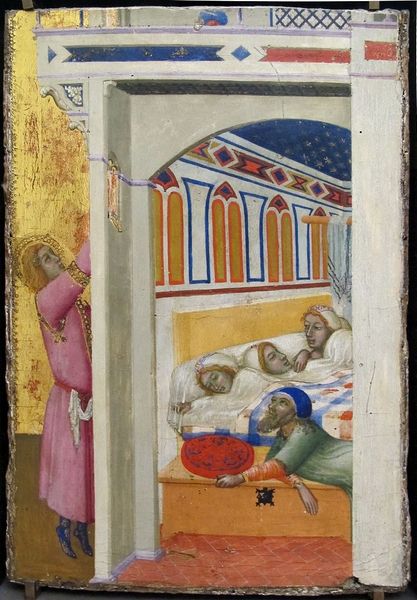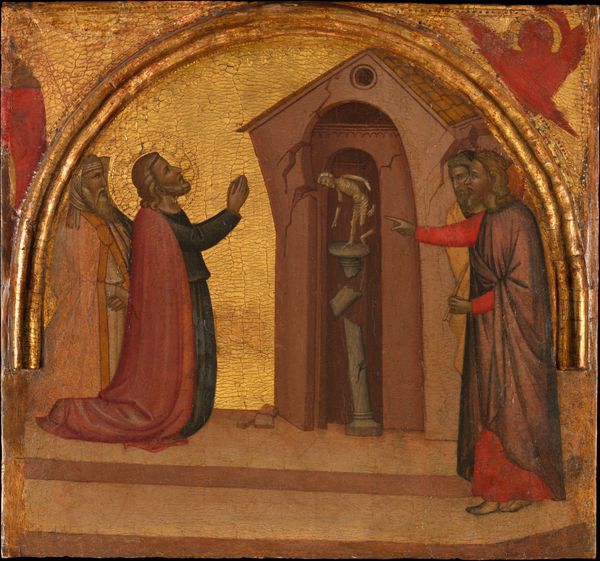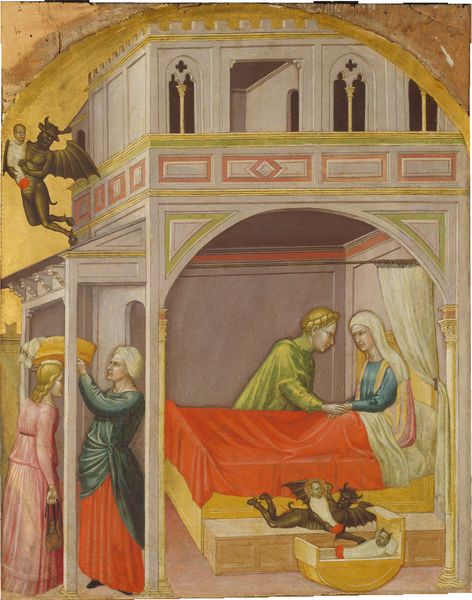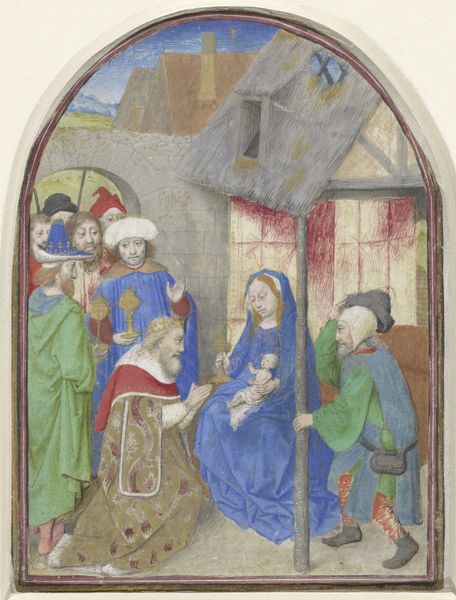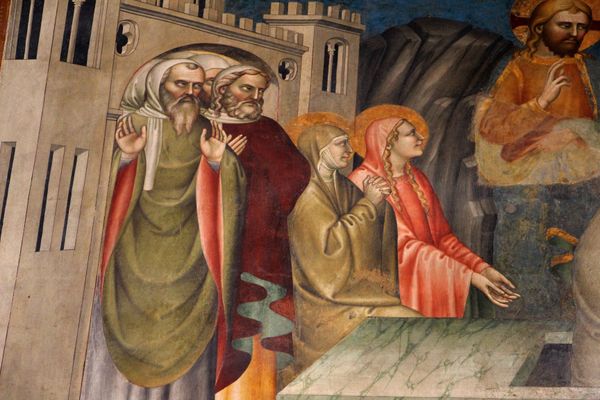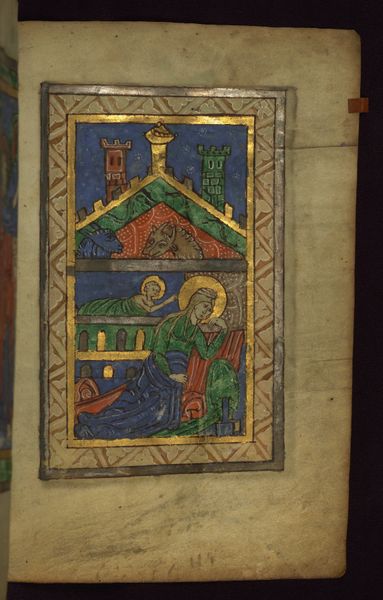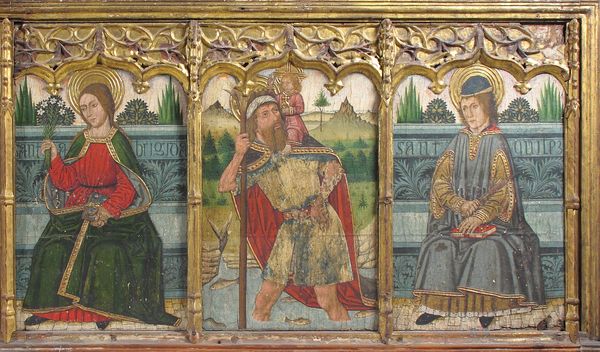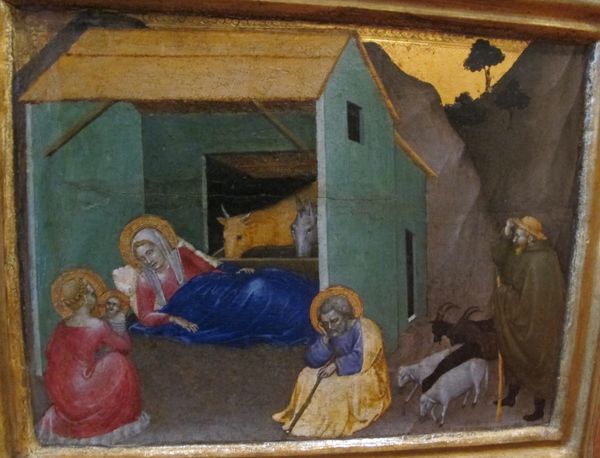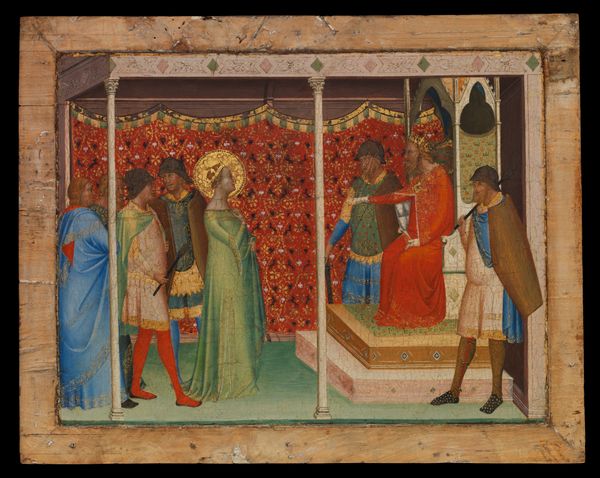
Da Spedale Della Misericordia, Predella 3, Presentazione Al Tempio E Orazione Nell'orto 1370
0:00
0:00
tempera, painting
#
medieval
#
water colours
#
narrative-art
#
tempera
#
painting
#
figuration
#
history-painting
#
italian-renaissance
Copyright: Public domain
Curator: What strikes me immediately is the bifurcation—two distinct scenes vying for attention within a single panel. Editor: Indeed. We are looking at "Da Spedale Della Misericordia, Predella 3, Presentazione Al Tempio E Orazione Nell'orto," crafted around 1370 by Giovanni da Milano. It’s a tempera painting that masterfully captures two pivotal biblical narratives. Curator: The spatial composition is intriguing. The Presentation at the Temple on the left, a somewhat static, architectural affair with cool blues, contrasts sharply with the dynamic drama of the Agony in the Garden on the right, where darker, earthier tones prevail. Note how line and form articulate depth despite the work’s flat, medieval character. Editor: This contrast speaks volumes about the societal function of religious art at the time. The piece likely served as a didactic tool, offering the public—many of whom were illiterate—easily digestible, visually compelling moral lessons tied to their own civic identities through charitable institutions. Curator: I concur on its didactic function, but let's not overlook the aesthetic impact. Observe the deliberate use of color and its symbolic intent. The intense blues surrounding Mary in the temple scene speak to her divine role, while the earthy browns in the garden scene establish a connection between Christ’s human struggle and nature itself. Editor: Absolutely, the artistic choices were far from arbitrary; yet we should consider the commissioning context of the time. The "Misericordia," a charitable institution, sought not only to depict holy scenes but also to foster public identification with values such as compassion, redemption, and service – thereby reinforcing societal hierarchies within a spiritual framework. Curator: I maintain that the painterly execution of the scenes has aesthetic value regardless of its setting, as evidenced by Giovanni da Milano’s manipulation of pictorial space. Though the two panels clearly depict space and time, they seem to hover about one another as objects in an ambiguous field—a sign, in my eyes, of its modernity. Editor: Ultimately, viewing "Da Spedale Della Misericordia" presents a multilayered experience—where formal technique intersects with societal role, narrative power enhances political goals, and private experience intertwines with a community of shared values. Curator: I agree; and perhaps its genius lies not just in illustrating biblical stories, but also subtly underscoring the tensions between piety and power through meticulous arrangement.
Comments
No comments
Be the first to comment and join the conversation on the ultimate creative platform.

